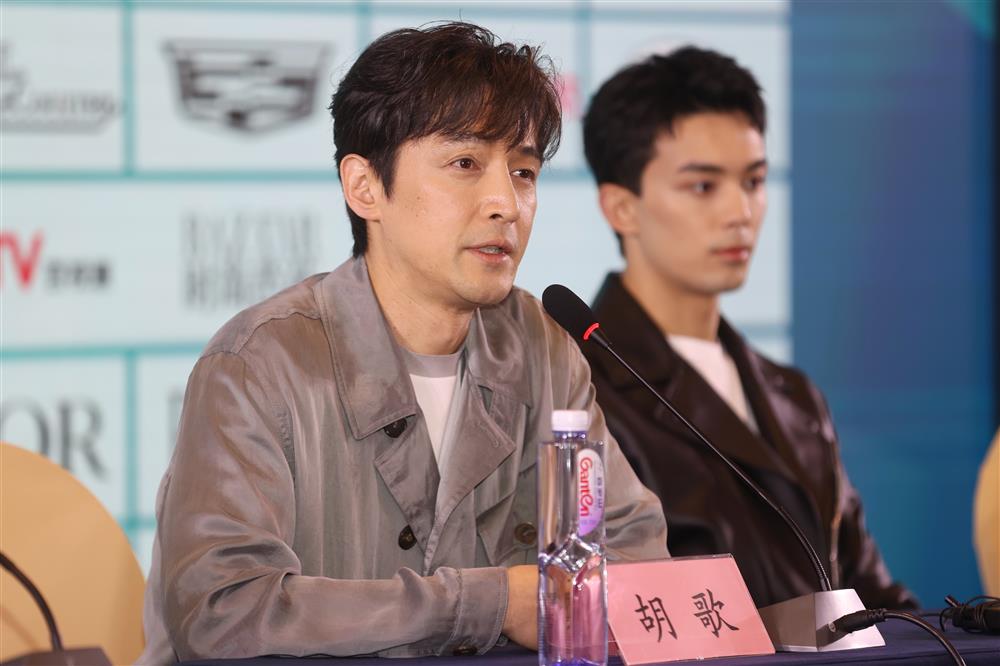How much do we know about the past? It's not Gu Defang. [Memory of the Sea] It's Yidefang Lane | Public | Past
A recent social news article brought the address "Lane 66, Xiangyang North Road, Xuhui District" into public view.
According to citizen feedback, there is an error in the introduction of the "Shanghai Excellent Historical Architecture" stone plaque at the entrance of the alley, mistakenly writing "Yide Fang" as "Gu De Fang". After media reports and review of relevant literature by the Municipal Housing Management Bureau, it was confirmed that the word "yi" should be used. We promise to revise and re list the stone plaque here.
What is the background of this Yide Fang?
According to the Xuhui District Gazetteer, Yide Fang, also known as 1-12 Lane 66, 1-11 Lane 68, 1-11 Lane 70, 1-10 Lane 72, and 1-10 Lane 74 on Xiangyang North Road, runs between Changle Road and Xinle Road. It covers an area of 4346.69 square meters and currently has 219 households and 775 people. It is a modern style alley. Built around 1930, there are a total of 54 brick and wood three story buildings in a rectangular shape with five rows in front and back, divided into Yide Fang 1-5 lanes, which have the same shape and are arranged neatly. The building area is 7665 square meters.
![How much do we know about the past? It's not Gu Defang. [Memory of the Sea] It's Yidefang Lane | Public | Past](https://a5qu.com/upload/images/dbf55875d8b5a3ebc64615167a8b3243.jpg)
In history, its house number was once "Yide Fang, intersection of Lourdeen Road and Pushi Road in the French Concession.". Laoerdeng Road, now known as Xiangyang North Road. Pushi Road, also known as today's Changle Road.
Mistakenly referred to as "Gu Defang". Explanation that needs to be corrected
1
Time goes back to the moment when Yide Fang just stood in this city.
![How much do we know about the past? It's not Gu Defang. [Memory of the Sea] It's Yidefang Lane | Public | Past](https://a5qu.com/upload/images/97e3ce5c0fc3ffbeea792b0a9dd6634d.jpg)
Later, Chu Tunan served as Honorary Chairman of the Central Committee of the Chinese Democratic League and Vice Chairman of the Standing Committee of the Sixth National People's Congress. At that time, he was still a young writer and translator from Yunnan who had just translated Nietzsche's "Chalas Tura Says" in prison. In the research of later scholars, Chu Tunan came to Shanghai in 1935 in the hope of finding an opportunity to travel from this city to the Soviet Union. But due to the need to accommodate the child, he missed the flight and lost contact with the contact person, ultimately unable to make the trip. During his stay in Shanghai, he settled his home in Yide Fang.
In 1935, Chu Tunan joined the Department of History and Geography at the School of Literature, Jinan University under the name "Chu Zeng", serving as a "part-time lecturer". In 1937, he married Peng Shuduan, a native of Hunan, and lived with Chu Zeqing, who was born to his ex-wife, at a certain location in the Yide Fang on Lourden Road in the French Concession.
Years later, his child recalled, "From 1936 to 1937, my parents took me to live on the third floor of a three story alley house on Lourden Road in the French Concession of Shanghai. The first and second floors were occupied by the landlord, while the third floor rented by my family was a living room, a pavilion and toilet at the corner of the stairs from the second to third floors."
What are the scenes on both sides when the young Chu Tunan walks along this road? At that time, all along Xiangyang North Road were residential buildings. Qingyun Lane, Lane 22, Xiangyang North Road, is a new style lane built in 1912. Lane 44 includes Deyun Lane, Rende Lane, Linzhi Lane, and Puxiang Lane. Lane 6, Xiangyang North Road, is a small row villa area with 45 house numbers. Along Xiangyang North Road to the intersection of Huaihai Road, there is the private garden of Xue Baocheng, a pigment giant in Jiangyin. Inside, there is a Xue family ancestral hall with buildings such as stone turtles and stone beams. In 1938, the Council of the French Concession purchased it for use as a new office building, which was later converted into a park and opened to the Chinese people on January 30, 1942. This is now Xiangyang Park.
![How much do we know about the past? It's not Gu Defang. [Memory of the Sea] It's Yidefang Lane | Public | Past](https://a5qu.com/upload/images/872cd14e44e1b792d0f863ec5266034c.jpg)
Chu Tunan walked out from the quiet, closed doors of the Yide Fang, which was still considered brand new at the time, and was embracing the moment of life's choices.
2
"Ma Laoyu lived at No. 37 Yide Fang, Laoerdeng Road, Shanghai. When he entered, the three big characters" Yide Fang "were written by him. On Sundays, there were many guests, including wealthy gentlemen Tao, Lv Baihua, Zou Mengshan, Zhou Lianxia, Sun Xueni, Ling Wanqing, Zheng Renshan, Xiang Jieshi, as well as Ma's fellow disciples. They talked and asked each other about their skills, while Ma Laofu kept his hands open, answering fluently, and chatting and laughing confidently. The funniest one was Zhou Lianxia, who always enjoyed elegance and humor, and the air was lively."
The calligrapher, painter, and seal carver Ma Gongyu mentioned in the article are also residents of Yide Fang. Ma Gongyu is from Yongjia, Zhejiang. His great grandfather and grandfather both worked in poetry, literature, calligraphy, and painting. Ma Gongyu inherited family education from a young age and served as the Director of Documents and Chinese Language Teacher at Daxia University, Professor at Shanghai Fine Arts Specialized School and China Academy of Literature, Executive Director of China Art Education Society, and other positions. After the liberation of Shanghai, he was hired as a painter at Shanghai China Academy of Painting and wrote works such as "History of Calligraphy" and "Gongyu's Stamps".
![How much do we know about the past? It's not Gu Defang. [Memory of the Sea] It's Yidefang Lane | Public | Past](https://a5qu.com/upload/images/ded6097558dc1511c6176fd2f057ee2b.jpg)
In the article "A Visit to Ma Gongyu's Descendants by Geng Shiqian", the author writes:
Ma Gongyu, originally from Wenzhou, Zhejiang, settled at No. 37 Yide Fang, Laoerdeng Road, Shanghai for a long time. This is a three story house, and the second floor became his place of art. With the change of times, Laoerdeng Road was renamed Xiangyang North Road, and the number of the house has also changed. The painted sign "Gengshi Fen", which was originally nailed to the back door and handwritten by Ma Lao, has long disappeared, and the second floor was naturally used for other purposes. However, the family remembers clearly that on the second floor at that time, there was a large bed in the middle of the room, and the painting table facing the south window was composed of two capital character tables, with a long row on the west wall. The bookshelf was designed by Mr. Ma himself, and the books were packed all the way up to the ceiling. The room was filled with various scrolls and scrolls, even scattered on the ground. The painting table was littered with ink and stones, and the bald pen was messy. Therefore, there was a note at the staircase saying 'No Visits'. Mr. Ma smiled and said,' There's no secret on top, I'm really afraid of blaspheming visitors. '"
Sun Weizu, a seal engraver, mentioned in his article "The Inheritance and Economic Life of the Modern Maritime Seal Engraver Group: 1949-1976" that in the past, seal engravers such as Huang Binhong, Ding Fuzhi, Huang Bao, Ma Gongyu, Zhao Zongqian, Qian Shoutie, Fang Jiekan, Ma Wanli, Zhu Qishi, Ye Luyuan, Qian Jundian, etc. had relatively stable middle and upper class professions, and also became famous for their stage names. These seal engravers had a relatively high level of economic status. They generally live in concessions with better housing conditions. "Ma Gongyu lived on the third floor of a single room in Yide Fang, Xiangyang North Road, in the French Concession. Due to his ample housing, he received loans from relatives and friends. After resigning from his position at the Postal Savings and Exchange Bureau in 1941, he made a living by specializing in calligraphy and painting engraving. Due to the large number of recipients, he hired a bookboy as a helper."
3
![How much do we know about the past? It's not Gu Defang. [Memory of the Sea] It's Yidefang Lane | Public | Past](https://a5qu.com/upload/images/583ee512599f33bca8a511f64d19efba.jpg)
According to the data, Ma Gongyu, who lived in Yide Square, loved life. He didn't touch tobacco, wine or tea at ordinary times. He liked to drink milk, eat eggs and Congee. "Wearing a pair of cloth clothes and shoes, I take a walk and practice Tai Chi in Xiangyang Park all year round."
In order to commemorate the former French Consulate General and diplomat in Shanghai, Lavigne, who died in 1939, the Board of Directors initially named the park Lavigne Park and built a marble Lavigne monument inside the park. Due to its proximity to Dumei Road, Shanghainese commonly refer to it as Dumei Park. In 1943, the Wang puppet government renamed the park Mount Taishan Park. After the victory of the Anti Japanese War, the Nationalist government renamed it Linsen Park in 1946. On May 28, 1950, the Shanghai Municipal People's Government approved the renaming to Xiangyang Park. In 1961, the Basic Construction Committee of the Municipal People's Committee approved the incorporation of adjacent 1900 square meters of land into the park, slightly expanding it to its current scale.
There are nearly a hundred types of flowers and trees planted in Xiangyang Park, including cherry blossoms, camellias, rhododendrons, crabapple, roses, etc. The entrance of the park is a wide north-south avenue, with thick hanging trees on both sides blocking the sun, which is very spectacular. There are also fountain pools, large lawns, hexagonal pavilions, and high platforms inside. It is said that since its opening in the 1940s, it has been a gathering place for Shanghai Go enthusiasts to play chess. Famous Go players Chen Zude, Qian Yuping, Rui Naiwei, Wang Qun, as well as the talented Go player Chang Hao and a large number of Shanghai Go experts, have all had a history of learning Go in Xiangyang Park. There was a saying that "Go coaches all come from Xiangyang Park.". The 1960s was the heyday of Go activities in Xiangyang Park. More than 200 enthusiasts come to the tea room every day to play chess. After all 20 games in the tea room are filled, many people only have to go to the outside pergola and the stone benches in the courtyard to create a new battlefield. The number of people coming to the park to watch chess greatly exceeds that of the chess players. Some chess enthusiasts from Hongkou District and Yangpu District have rushed here, and there are also many people from other places who come to admire their names.
At that time, I wonder if every morning, Ma Gongyu, who left the study, would stop to watch chess, play chess, and chat with tea when he came over to fight? Will he know that one day, his residence, which carries the meaning of "taking care of the elderly," will be mistaken for "Gu Defang"?
![How much do we know about the past? It's not Gu Defang. [Memory of the Sea] It's Yidefang Lane | Public | Past](https://a5qu.com/upload/images/9b7f0dd556b1dd88579b9ee5d46ba030.jpg)




